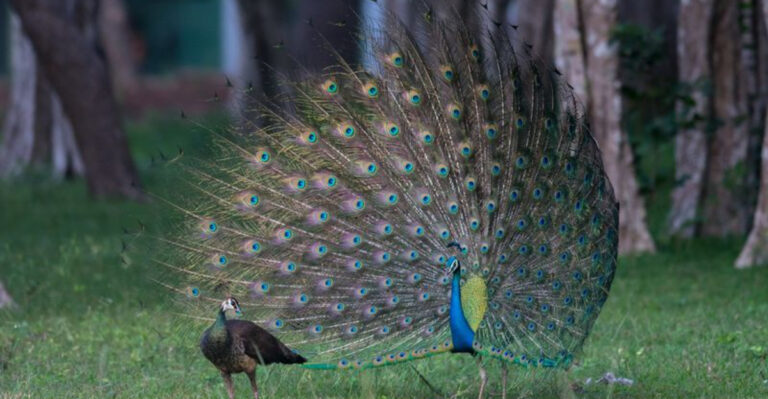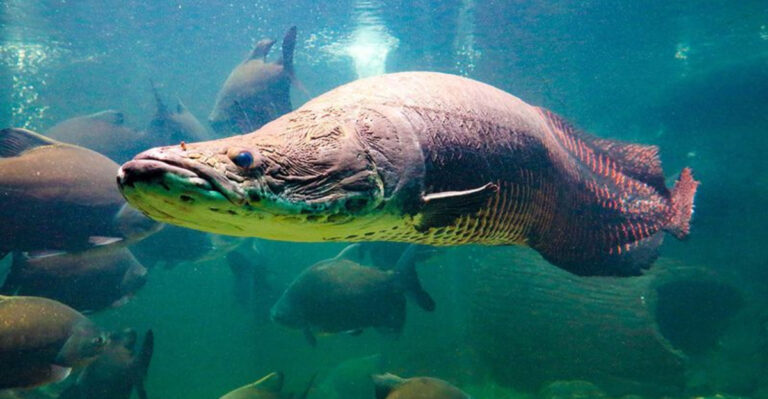16 Invasive Fish Species That Are Actually Improving American Waterways
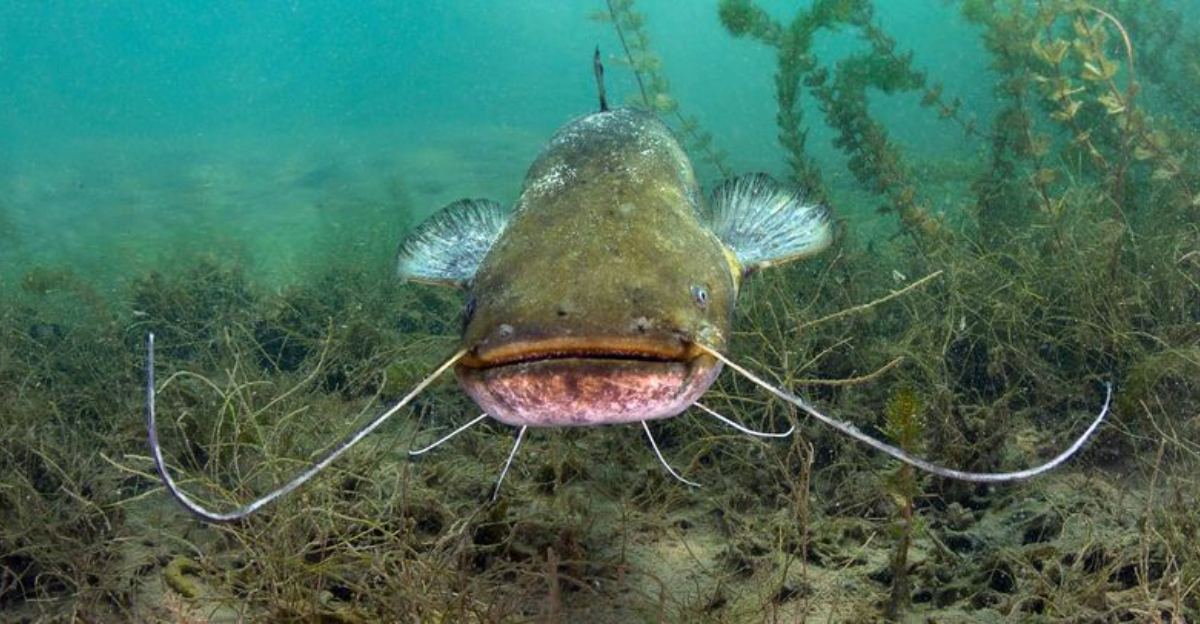
Invasive fish species often get a bad rap for disrupting local ecosystems. But surprisingly, some unexpected visitors to America’s lakes and rivers are actually making positive contributions to our waterways.
From controlling problematic native species to creating new fishing opportunities, these underwater immigrants are proving that not all invasions spell disaster for our aquatic environments.
1. Silver Carp
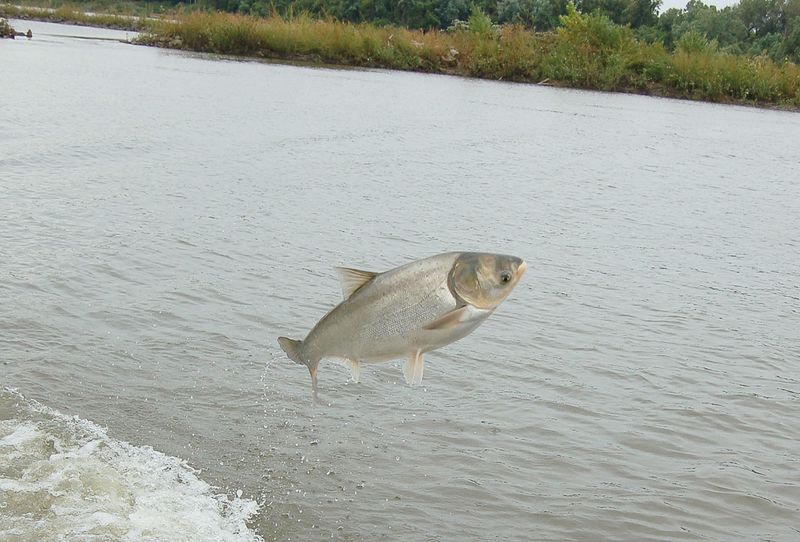
Originally imported from Asia for aquaculture and water treatment, silver carp escaped into the Mississippi River basin decades ago. These filter-feeding machines consume massive amounts of algae and plankton, which has unexpectedly helped clear up murky waters in some areas.
Scientists have observed improved water clarity in certain sections of the Illinois River where these fish thrive. By reducing excessive algal blooms caused by agricultural runoff, they’re essentially providing a free cleanup service.
While still considered problematic for their jumping behavior and competition with native species, their filtering capacity offers a silver lining that researchers are now studying for potential managed applications in highly polluted waterways.
2. Grass Carp
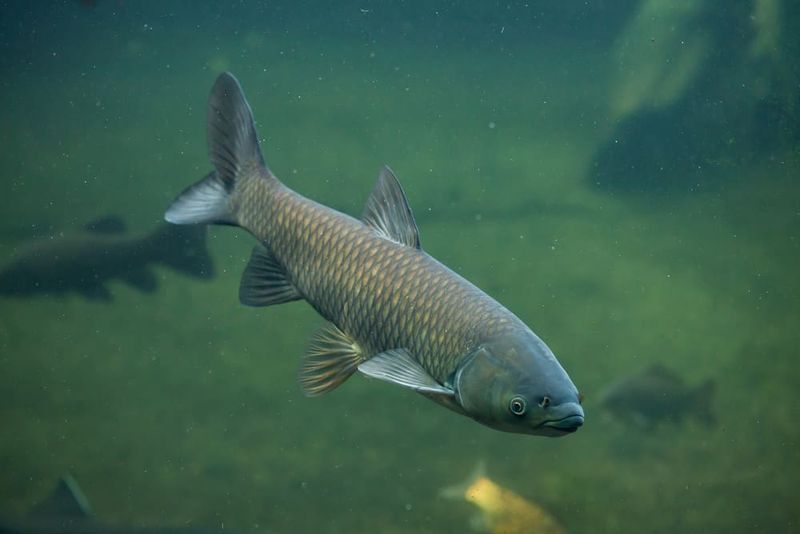
Meet the underwater lawnmowers of America’s lakes. Grass carp, native to eastern Asia, munch through problematic aquatic vegetation that chokes waterways and boat motors alike. One adult can devour up to 100 pounds of plants daily!
In Florida’s hydrilla-infested lakes, managed grass carp populations have reduced the need for chemical herbicides. This natural approach saves millions in weed control costs while avoiding the environmental impacts of chemical treatments.
Many states now stock sterile grass carp specifically for vegetation management. Their voracious appetite for invasive plants like hydrilla and Eurasian watermilfoil has transformed once-impassable waterways into navigable channels, benefiting both recreation and native fish habitats.
3. Tilapia
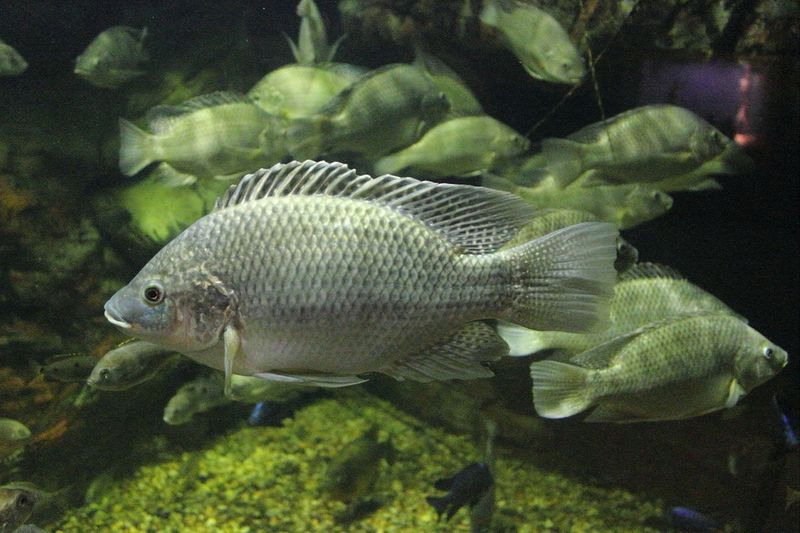
In warm southern states like Florida and Texas, escaped tilapia have found an unexpected niche. These hardy African natives feast on mosquito larvae, potentially reducing populations of these disease-carrying pests in suburban canals and retention ponds.
Their constant foraging disrupts mosquito breeding cycles. One study in Florida found mosquito larvae numbers dropped by nearly 90% in waterways with established tilapia populations compared to similar water bodies without them.
As climate change expands mosquito ranges northward, some ecologists suggest tilapia’s mosquito-controlling abilities might become increasingly valuable. Their presence in artificial water features creates a natural form of pest management where chemical options might otherwise be necessary.
4. Brown Trout
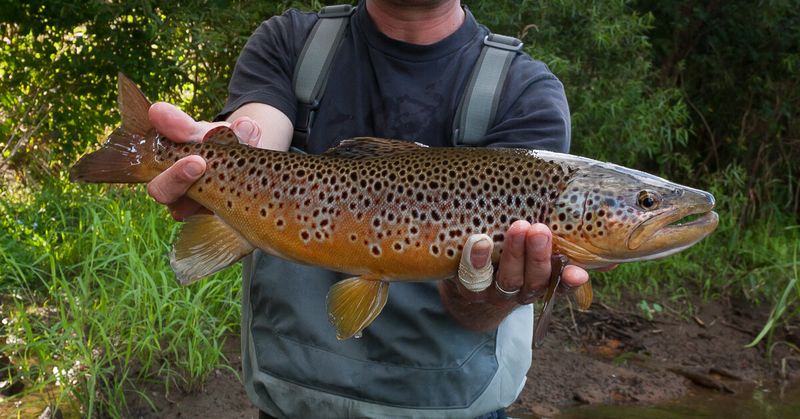
European brown trout, introduced to American waters in the 1880s, have transformed mediocre fishing spots into world-class destinations. These adaptable predators thrive in environments where native brook trout struggle, particularly in waters that have warmed due to development or climate change.
Michigan’s Au Sable River exemplifies this transformation. Once its waters became too warm for native trout, browns moved in and created a legendary fishery that draws anglers from around the world, generating millions in tourism revenue.
Their presence has sparked conservation efforts that benefit entire watersheds. Many rivers now receive protection and restoration specifically to maintain healthy brown trout populations, creating improved habitat that supports diverse native species as well.
5. Red Swamp Crayfish
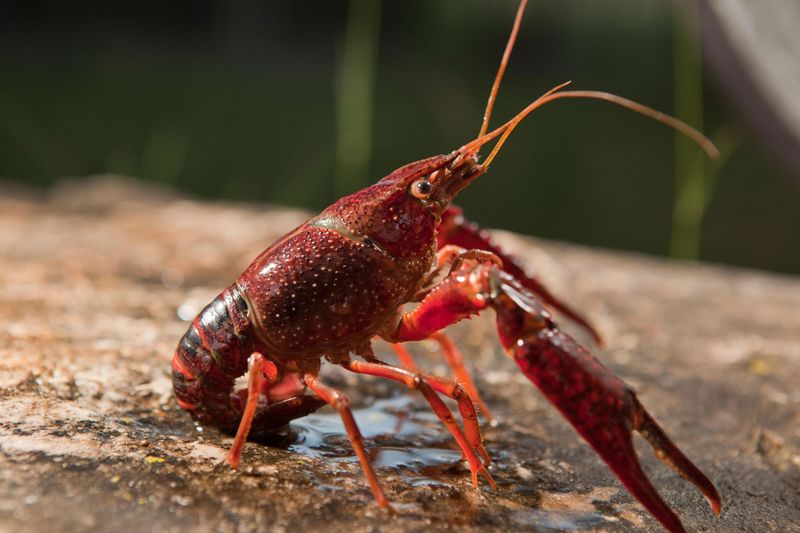
Louisiana’s famous red swamp crayfish have hitchhiked across America, establishing populations in many watersheds. These opportunistic omnivores serve as nature’s recycling system, breaking down dead plant and animal matter that would otherwise decompose slowly and consume oxygen.
In some degraded urban waterways, these crayfish process organic pollution faster than native species. Their burrowing activity also aerates sediments and releases nutrients, creating microhabitats that benefit certain native fish and invertebrates.
While they can displace native crayfish, in areas where native species were already eliminated by pollution, they fill an empty ecological niche. Their presence supports food webs and provides forage for popular game fish like bass and catfish.
6. Blue Catfish
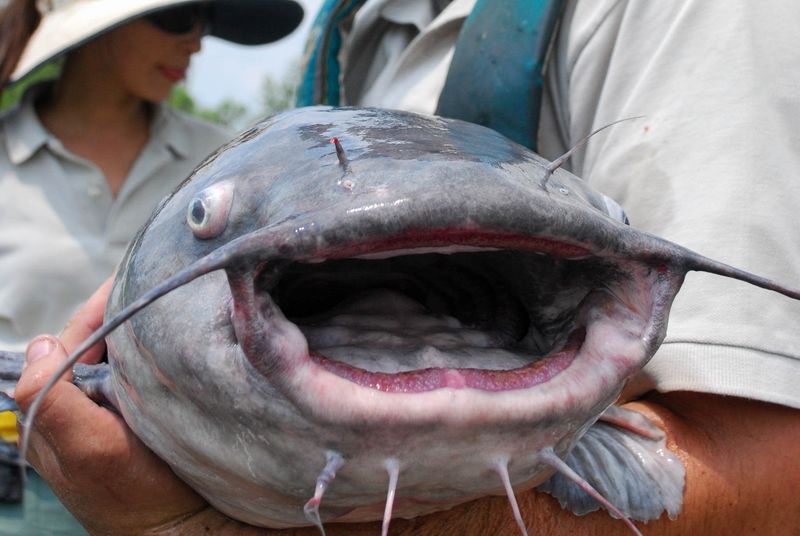
Blue catfish from the Mississippi basin have invaded Chesapeake Bay tributaries, growing to enormous sizes. These opportunistic giants have a surprising benefit – they’re biological vacuum cleaners for mercury and other heavy metals that contaminate waterways.
Research shows these catfish absorb and sequester toxins in their fatty tissues. When harvested by commercial fishermen, these contaminants are effectively removed from the ecosystem. Maryland has launched programs encouraging commercial harvest specifically for this reason.
While their voracious appetite impacts native species, targeted fishing pressure keeps populations in check while simultaneously cleaning polluted waters. The harvested fish provide economic opportunities for commercial fisheries and are processed into products where the contaminants don’t pose human health risks.
7. Redear Sunfish
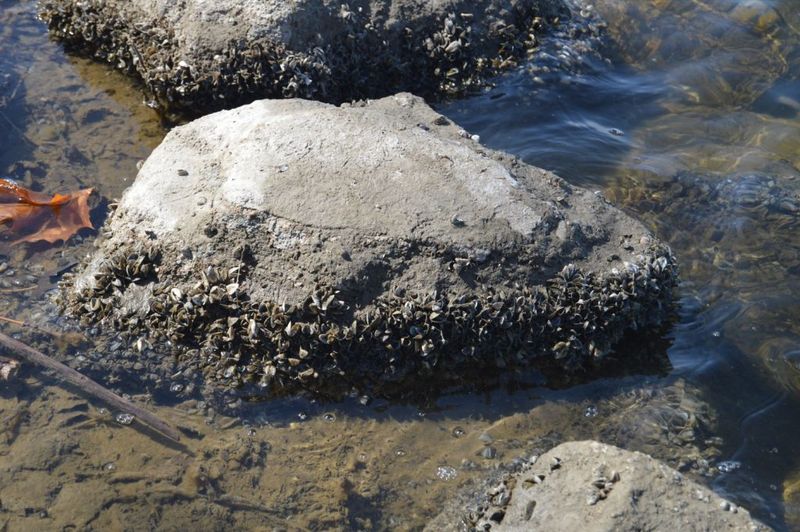
Redear sunfish, transplanted beyond their native southeast range, have discovered a taste for one of America’s most destructive aquatic invaders – zebra mussels. Their specialized throat teeth can crush the hard shells that deter most native fish.
In Lake Havasu, Arizona, introduced redear have grown to record sizes feasting on these invasive mussels. Scientists recorded a 40% reduction in mussel density in areas with established redear populations.
This biological control helps protect water infrastructure from mussel damage. Municipal water systems spend millions annually clearing mussels from pipes and equipment, but redear sunfish provide a natural, sustainable solution in many reservoirs. As a bonus, they offer excellent sport fishing opportunities with their large size and delicious, firm flesh.
8. Northern Snakehead
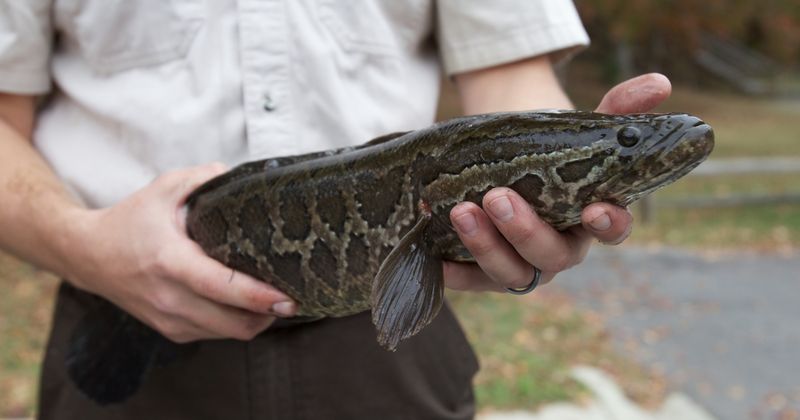
The much-feared northern snakehead has a surprising environmental upside in the Chesapeake Bay watershed. These toothy predators from Asia target destructive invasive crayfish that damage wetland vegetation and increase erosion.
Wetland scientists have documented improved marsh health in areas with established snakehead populations. By controlling aggressive crayfish, they help preserve critical nursery habitat for commercially important species like blue crabs and striped bass.
Their presence has also created a passionate recreational fishery. Anglers specifically targeting snakeheads generate tourism revenue while helping control their numbers. Chefs have embraced their firm, white flesh, creating economic incentives for harvest and establishing them as a sustainable food source rather than merely an ecological problem.
9. Common Carp
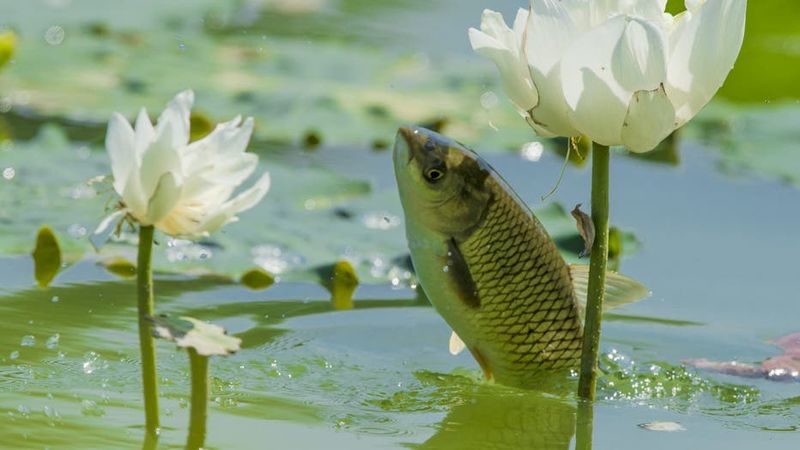
Common carp, Europe’s aquatic gift to America in the 1800s, stir up sediment while feeding. This behavior, often criticized for clouding water, creates unexpected benefits for shorebirds and wading birds in certain habitats.
In shallow wetlands of the Great Lakes region, carp’s bottom-feeding exposes invertebrates that would otherwise remain buried. This provides easy meals for herons, egrets, and endangered species like black terns. Wildlife managers at the Ottawa National Wildlife Refuge have documented increased bird diversity in managed wetlands with moderate carp populations.
Their feeding activity also releases nutrients locked in sediments, stimulating productivity at the base of food webs. When properly managed at appropriate densities, these ancient fish can be valuable tools in wetland habitat enhancement rather than merely destructive invaders.
10. Rainbow Trout
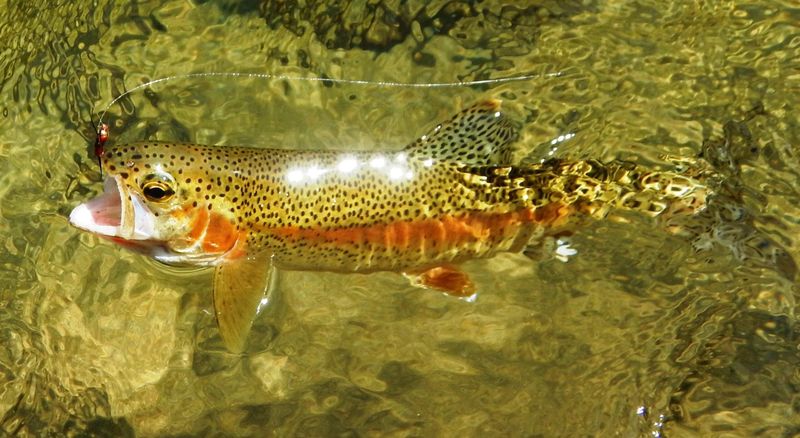
Rainbow trout, California natives now established nationwide, have become ambassadors for cold, clean water. Their popularity with anglers creates powerful constituencies for watershed protection far beyond their native range.
In Pennsylvania’s Lehigh River, a once-dead waterway poisoned by coal mine drainage, rainbow trout stocking helped drive massive cleanup efforts. The public’s desire to fish for these colorful game fish generated political will and funding for acid mine remediation that has benefited all aquatic life.
Their sensitivity to pollution makes them excellent indicator species. The presence of self-sustaining rainbow populations signals healthy ecosystems, while their absence quickly alerts biologists to water quality problems. This early warning system helps protect native species that might otherwise decline silently without the high-profile “canary in the coal mine.”
11. Alewife
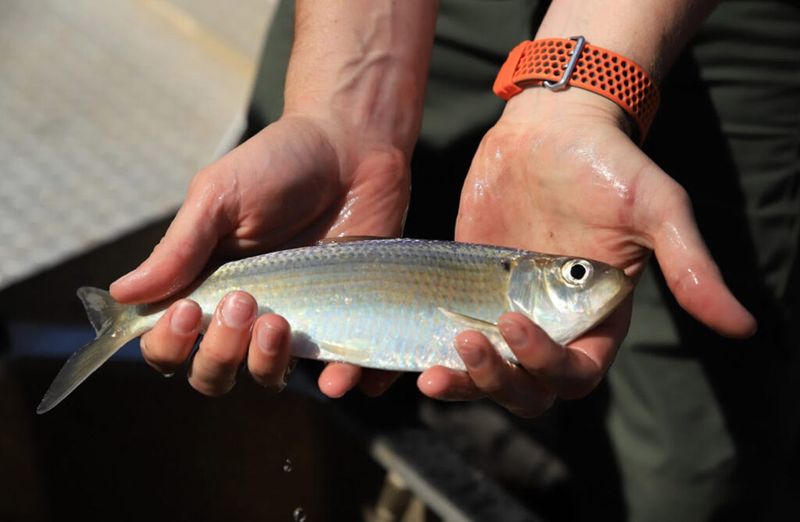
Alewives, small herring relatives from the Atlantic, transformed the Great Lakes after entering through canals. While initially devastating to native fish, they became the foundation for one of America’s most valuable recreational fisheries.
When Pacific salmon were introduced to control alewife populations, something remarkable happened. The salmon thrived on this abundant food source, growing to trophy sizes and creating a billion-dollar sport fishing industry across the Great Lakes. Communities once devastated by industrial decline found economic revival through fishing tourism.
This invasive species now forms the base of a complex food web supporting not just salmon but also recovering native species like lake trout. Fisheries managers carefully balance alewife populations – enough to feed prized game fish, but not so many that they harm native species recovery.
12. Asian Swamp Eel
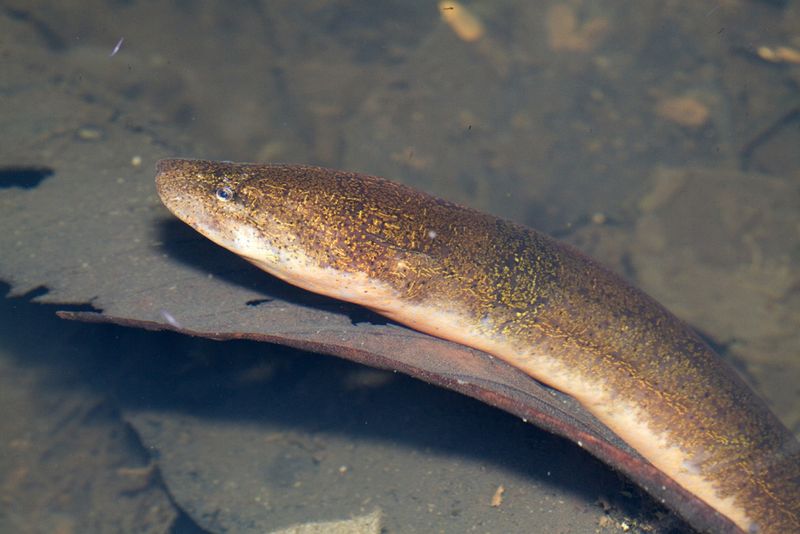
Asian swamp eels, established in rice-growing regions of Louisiana and California, have found an unexpected agricultural niche. These snake-like fish feast on crayfish and apple snails that damage rice crops and irrigation infrastructure.
Rice farmers in Louisiana’s Cajun country have noticed reduced levee damage in fields where swamp eels have established. The eels target burrowing crayfish that create costly breaches in field water control structures. One agricultural extension study estimated savings of $200-300 per acre in repair costs.
While still monitored carefully for ecological impacts, their ability to survive in oxygen-poor environments makes them uniquely suited to rice agriculture. Some innovative farmers now manage water levels specifically to encourage these unexpected allies, reducing the need for chemical controls against crop-damaging invertebrates.
13. Flathead Catfish
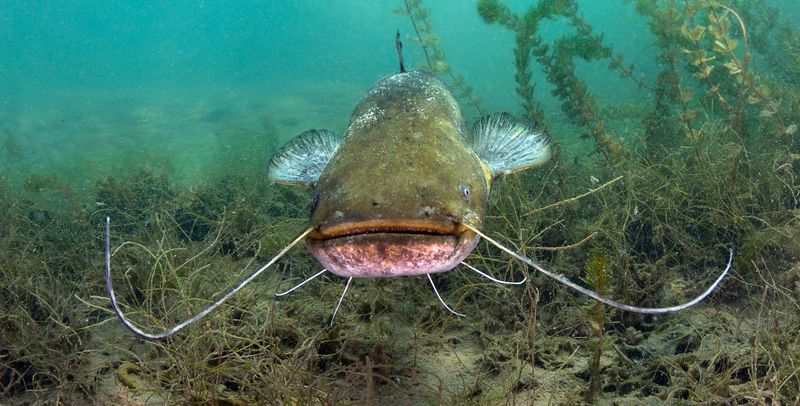
Flathead catfish, native to the Mississippi basin but introduced to Atlantic coastal rivers, have helped restore balance in systems overwhelmed by explosive growth of smaller fish. These massive predators target species like gizzard shad that can reach problematic densities.
In North Carolina’s Cape Fear River, flatheads reduced overabundant bullhead catfish that dominated the ecosystem. This predation opened niches for other species and improved overall biodiversity. Electrofishing surveys showed increased species richness in reaches with established flathead populations.
Their selective predation on mid-sized fish creates a trophic cascade that benefits both smaller forage species and larger predators. While still controversial among fisheries managers, their ability to restore predator-prey balance in disturbed systems demonstrates how one invasive species can sometimes help control others.
14. Peacock Bass
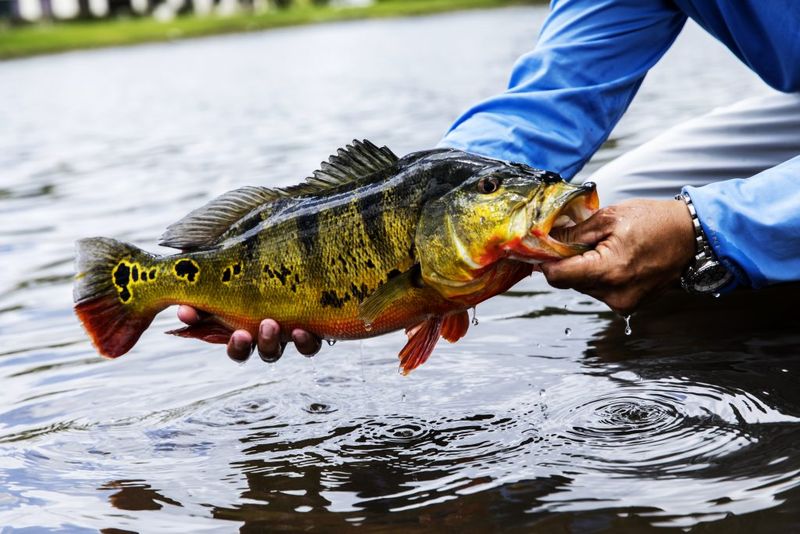
South Florida’s man-made canals once hosted few game fish until peacock bass arrived from South America. These colorful predators thrived in warm, artificial waterways where few native species could succeed, creating recreational opportunities in previously underutilized urban waters.
Miami-Dade County estimates peacock bass fishing generates over $8 million annually in the local economy. Neighborhoods once turning their backs on canals now embrace them as amenities, leading to cleanup efforts and improved water quality monitoring.
Their presence helps control other problematic invasives like spotted tilapia. By occupying an otherwise empty niche in artificial habitats, peacock bass provide ecological services without significantly impacting native ecosystems. Their success story shows how managed introductions in already-altered environments can sometimes yield positive outcomes.
15. Smallmouth Bass
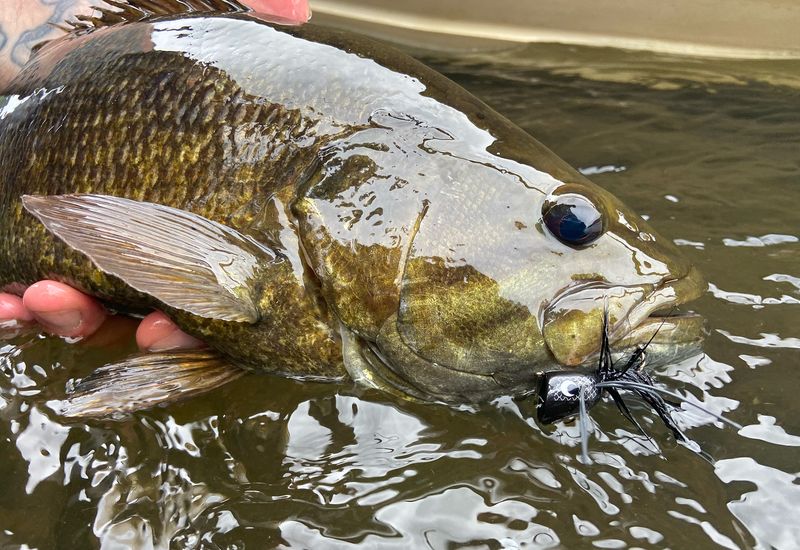
Smallmouth bass, transplanted from the Midwest to rivers nationwide, have become unlikely advocates for stream protection. Their popularity with anglers creates powerful constituencies demanding habitat conservation and water quality improvements.
In Virginia’s Shenandoah River, smallmouth health issues directly led to stricter pollution regulations. When these popular game fish developed concerning lesions, public outcry forced investigations that uncovered agricultural runoff problems affecting all aquatic life.
Conservation organizations focused on smallmouth bass have purchased riparian buffers and funded stream restoration benefiting entire ecosystems. While they can compete with certain native species, their role as “poster fish” for river conservation has generated millions in habitat improvement funding that helps native and non-native species alike.
16. Threadfin Shad
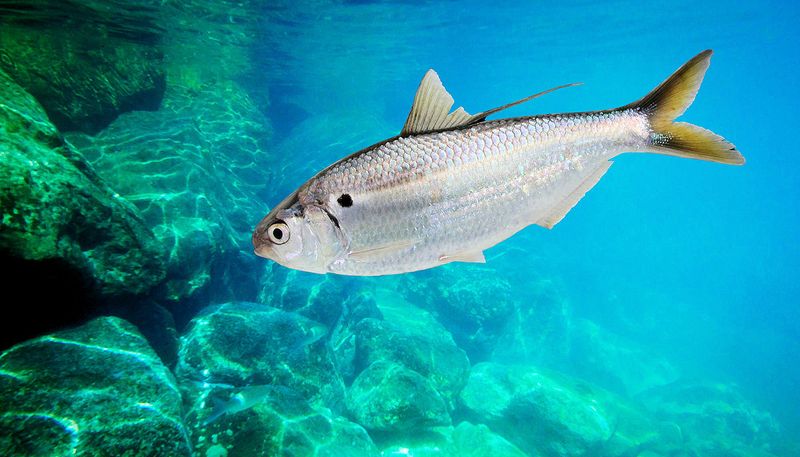
Threadfin shad, small herring relatives moved beyond their native southern range, have transformed artificial reservoirs across America. These prolific plankton feeders convert microscopic algae into fish flesh, dramatically increasing reservoir productivity.
At Lake Mead, their introduction created a food base supporting trophy striped bass and other game fish. Fisheries surveys showed up to 300% increases in game fish biomass following threadfin establishment. Their efficient transfer of energy from primary production to fish protein makes reservoirs far more productive than they would be naturally.
Unlike in natural lakes, these introduced forage fish fill vacant niches in man-made impoundments. By occupying these artificial environments, they create productive fisheries where little existed before, providing recreational opportunities while having minimal impact on natural waterways.




